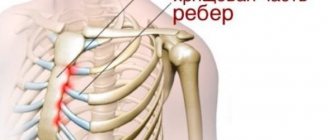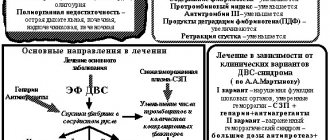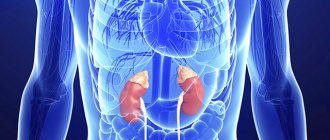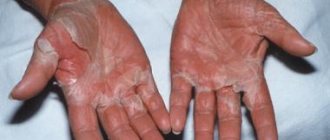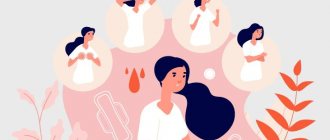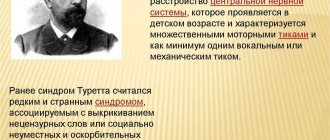What is bronchospastic syndrome, or bronchospasm, as it is usually called? Experts do not consider it an independent disease, since it is a consequence of obstruction of the bronchial tubes. The latter provokes disruptions in lung ventilation, which leads to a serious lack of oxygen. That is why the first symptoms of bronchospasm are shortness of breath and a feeling of suffocation. In this article we will look at the types of this pathology, the causes of its occurrence, the main symptoms, as well as methods of relief and therapy.
Kinds
Bronchospastic syndrome is usually divided into paradoxical and allergic.
Allergy is the main cause of bronchospasm
- Paradoxical bronchospasm is the opposite of the expected effect from the use of bronchodilators. That is, when using these medications, it is supposed to relax the muscles of the respiratory organs and eliminate bronchial obstruction, but the spasm, on the contrary, worsens.
- Allergic bronchospasm is the body's reaction to any allergen. It can be external, that is, entering the body from the environment, or internal, acting as a substance that is produced in the body as a reaction to damage to organs and tissues.
When treating bronchospastic syndrome of an allergic nature, the allergen should first be eliminated.
- Separately, it is necessary to consider such a type of bronchospasm as hidden. In this case, the symptoms of the pathology do not appear until the irritant enters the body. This form of bronchospasm is often called paroxysmal, since it is characterized by sudden attacks that increase rapidly.
Symptoms
Signs of bronchospasm may be:
- Lack of air, chest congestion.
— Abnormal breathing of the patient: prolonged exhalation and whistling, audible even at a distance.
- Painful dry cough. The patient has difficulty coughing, he turns red or even blue.
— The patient sits, leaning on his hands. It's easier for him in this position.
“Fear is clearly expressed on the face.
Causes
In most cases, bronchospasm in adults develops against the background of a tendency to allergies or bronchial asthma. However, provoking factors may be different. Let's look at the main ones.
Allergens
The most common causes of bronchospasm are allergens. Here are the main ones:
- household (dust, feathers, fluff, etc.);
- plant (mainly plant pollen);
- food;
- epidermal (animal fur, hair, etc.);
- chemical (dyes, preservatives, etc.).
Drugs
Antibiotics can cause bronchospasm.
Certain drugs can also cause bronchospasm. Among them:
- non-steroidal anti-inflammatory drugs;
- antibiotics and penicillins;
- beta blockers;
- inhalational anesthetics;
- calcium channel blockers;
- agents that affect specific receptors.
It is recommended that you pay attention to their side effects before using such medications.
Diseases
Latent paroxysmal bronchospasm often occurs against the background of the following diseases:
- bronchitis;
- laryngitis;
- carditis;
- hay fever;
- pneumonia;
- rhinitis;
- cystic fibrosis;
- periarteritis nodosa;
- multiple organ pathology;
- adenoids.
Other reasons
Fungal infection is one of the reasons for the development of bronchospasm.
Among other reasons why bronchospasm occurs, it is important to highlight the following:
- intoxication as a consequence of respiratory tract disease caused by a virus or bacteria;
- bad weather conditions;
- penetration of a foreign body into the respiratory tract;
- underlying disease in acute form (obstructive pulmonary disease, etc.);
- effects on the respiratory system during medical procedures;
- poisoning due to fungal infection.
Sometimes severe stress can also cause bronchospasm.
Bronchospasm in adults
Bronchospasm is a dangerous condition, so it is extremely important to know how to relieve bronchospasm in an adult prone to blockage and obstruction of the airways. Such people usually carry medications with them to relieve symptoms.
Physical activity, strong odors, and even strong emotional experiences and stress can provoke an acute condition in people at risk. If manifestations of bronchospasm are repeated many times and reduce the quality of life, it is best to contact a qualified specialist who will prescribe a more effective, individually selected course of treatment.
Pathogenesis and symptoms
Considering the pathogenesis of the syndrome, we can say that bronchospasm is a protective reaction of the bronchi, which narrow when exposed to an irritant, so as not to let it pass lower into the lung area. Such phenomena, accompanied by compression of the bronchi, provoke a narrowing of the lumen, and therefore oxygen is not able to pass normally through the respiratory tract.
To compensate for the amount of air, the patient begins to take deep breaths, but the processes described above complicate exhalation, which causes the accumulation of oxygen in the lower respiratory tract, preventing the entry of new portions into the body.
Bronchospasm is dangerous primarily because it can lead to oxygen starvation and other life-threatening complications.
The mechanism of development of bronchospasm based on symptoms can be observed in the early and main stages.
Insomnia is an early symptom of bronchospasm
Early signs of bronchospasm are as follows:
- depression and fatigue;
- normal inhalation and difficulty exhaling;
- whistling in the chest area when breathing;
- bad dream.
The main manifestations of bronchospastic syndrome are quite serious:
- a feeling of heaviness and congestion in the sternum area;
- lack of oxygen and feeling of suffocation;
- dyspnea;
- painful cough (sometimes with sputum);
- a distinct whistle and wheezing from the lungs, which can be heard even at a distance;
- pale complexion and dark circles under the eyes.
When these symptoms of bronchospasm appear, it is necessary to take immediate action, since the consequences can be very serious.
Signs of an approaching attack
Bronchospasm in children can be felt in advance. If you seize the moment and provide prompt assistance to the child even before the attack begins, you can prevent its onset. So, before bronchospasm occurs, the following signs appear:
- Anxiety.
- Constant sneezing.
- Cough.
- Nasal discharge.
Often the attack occurs at a late time, so another symptom of approaching bronchospasm is the unexpected awakening of the baby in the middle of the night.
If parents monitor the child's condition, they can help him cope with this dangerous phenomenon.
Diagnostics
Bronchospasm can be determined using the following methods:
- Bronchophonography. This is an acoustic technique that allows you to test respiratory function in both adults and children. If sputum is present, the device helps improve nasal breathing during bronchospasm.
- Pulse oximetry. Makes it possible to check the amount of oxygen in the patient’s blood, as well as the pulse rate during an attack.
- Capnography. It is prescribed to assess the depth of breathing. The latter is detected by the carbon dioxide content in the air exhaled by the patient.
Bronchospasm in children
The consequences in children can be more severe, because bronchospasm in them usually occurs more acutely, the symptoms are more pronounced and the broncho-obstructive state quickly becomes total, which can lead to loss of consciousness and coma. A particularly dangerous condition can develop in a child suffering from chronic bronchitis.
With latent bronchospasm, the child becomes lethargic, breathing is shallow, the nasolabial triangle is cyanotic, breathing is wheezing, insomnia , cough and shortness of breath .
Emergency help for spasms
Since bronchospasm attacks occur mainly at night, the patient’s relatives and friends need to know how to relieve bronchospasm as quickly as possible and what is needed to relieve it at home.
First emergency aid for bronchospasm includes the following measures:
Alkaline drinking is recommended half an hour after an attack
- Eliminating the allergen. If the cause of the attack is exposure to an allergen, it is necessary to protect the patient as quickly as possible, remove him from the room or ventilate the room.
- Comfortable position. You should unfasten tight clothing, remove your belt, etc. The patient should be placed in a half-sitting position.
- Alkaline drinking. You can drink a little warm milk with a pinch of baking soda or slightly warmed mineral water. It is recommended to give such drinks to the patient only half an hour after the attack.
- Inhalations. They are used to relieve severe bronchospasms.
To prevent bronchospasm from causing serious complications, it is necessary to seek medical help as soon as possible.
Prohibited actions
Incorrectly taken measures to stop an attack can end in disaster. Therefore, if symptoms of an attack of bronchospasm occur, it is strictly forbidden to:
- Rub the patient with ointments, creams, aromatic oils.
- Install mustard plasters.
- Give honey and antitussive herbal decoctions.
- Give drugs that suppress the cough reflex (Codeine, Dionine, Dextromethorphan), sedatives and antihistamines.
- Use antiallergic inhalers (Intal, Tailed).
| A drug | Photo | Price |
| Codeine | specify | |
| Intal | from 679 rub. | |
| Tailed | specify |
You should not open the window wide in the cold, because cold air can aggravate the symptoms of an attack.
Treatment
Treatment of bronchospasm in adults usually includes complex drug therapy and folk remedies.
Drugs
During treatment, the doctor will generally prescribe some of the following medications:
- Bronchodilators. They are usually used in the form of aerosol pocket inhalers. It is recommended to use Ventolin and Salbutamol.
- Oral bronchodilators. Among them, Bronholitin, Singlon and Clenbuterol are prescribed.
- Glucocorticosteroids. They are recommended to be used to relieve swelling. The most commonly used are Dexamethasone and Prednisolone.
- Mucolytics and expectorants. They are recommended to improve sputum discharge and reduce cough. Among them are “Ambrobene” and “Fluimucil”.
- Ultrasonic inhalations. They are carried out using solutions of antispasmodic bronchodilators, including Berodual, Fluticasone and Atrovent. It is important to note that these drugs can cause serious side effects. Berodual, for example, should be used very carefully if you have problems with the cardiovascular system.
Recently, bronchospasm is often treated with the drug Eufillin. It is used in the form of solution, tablets and powder. It is important to note that it is recommended to use Euphyllin in the form of a solution only in a hospital setting.
Folk remedies
Bronchospasm can also be treated with folk remedies, but before using them you should consult your doctor and remember the following rules:
- It is allowed to carry out therapy with traditional recipes if bronchospasm is repeated at least several times.
- Folk remedies for this treatment are aimed primarily at facilitating the discharge of sputum and diluting it, as well as at maximizing the elimination of inflammatory processes.
- You must be completely sure that the product you are using will not cause an allergic reaction, otherwise complications of bronchospasm are inevitable, and instead of the desired effect, you can only get additional harm to your health.
Below are several effective folk recipes that help significantly alleviate the manifestations of pathology:
- Make a paste from one large onion using a grater or a meat grinder, add about one glass of natural honey to it and take a tablespoon three times a day. This recipe helps to quickly get rid of cough due to bronchospasm.
- 10 g of medicinal lungwort in crushed form should be poured into 200 ml of boiling water, left for an hour and taken a tablespoon 3 times a day for a month.
- Mix 500 g of natural honey with 250 g of ground coffee and take a small spoon before meals for about 20 days.
- For rubbing, grated garlic mixed with pork fat is used. However, it must be remembered that in the presence of fever, which is accompanied by bronchospasm, rubbing is contraindicated.
- To thin mucus and relieve inflammation, you can inhale with soda, sea salt or a drop of iodine.
It is important to remember that these procedures can simply improve the patient’s condition, but they do not replace drug treatment for bronchospasm, so it is absolutely impossible to ignore the doctor’s prescriptions.
Adequate therapy
Bronchospasm, the treatment of which should be carried out only under the supervision of a physician, is best eliminated in an inpatient setting. Usually the doctor prescribes the following medications:
- Glucocorticoids. They have an anti-inflammatory effect.
— Adrenergic agonists. These drugs are able to expand the smooth muscles of the bronchi.
- Medicine "Eufillin".
— Mucolytic, expectorant drugs.
- M-anticholinergics, the action of which is aimed at dilating the bronchi. You can, for example, use Atrovent spray.
Prevention
Various measures aimed at eliminating risk factors for the occurrence of a problem such as bronchospasm will help prevent the occurrence of pathology. We found out what it is and how the disease manifests itself. Now you need to learn about preventive measures:
- Cure the underlying ailment.
- If a person smokes, then he needs to give up this harmful habit.
- Try to walk outside more often.
- Take vitamins.
- Avoid contact with allergens.
If bronchospasm occurs, then you need to make an appointment with a pulmonologist or allergist, because only a qualified specialist can help.
